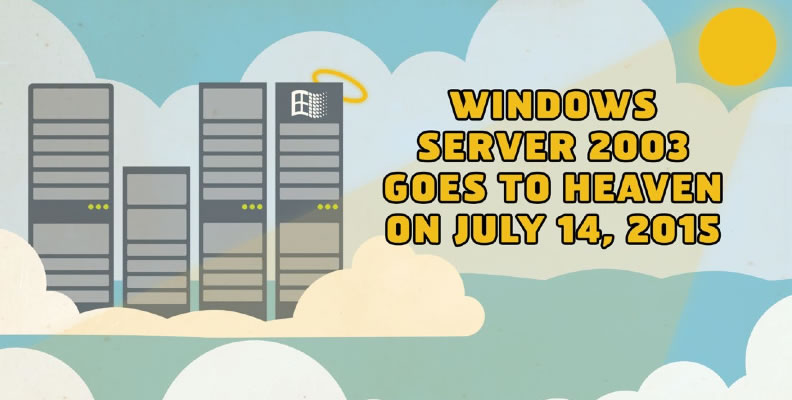Back in January, we wrote about Windows Server 2003, which Microsoft will end support for in July 14th. Remember the build-up last year for the death of Windows XP? A similar scenario will play out in 2015, as Microsoft announced in November that July 14th would mark the end of life for Windows Server 2003 and Server 2003 R2.
The most immediate impact of this announcement is that any system using Windows Server 2003 will no longer receive updates or patches from Microsoft, which the computing giant said in a white paper “can result in a less stable and less secure infrastructure for your organization.”
If you’re like most small to medium-sized business owners, a stable and secure computing environment is essential for day-to-day operations. So CMIT Solutions has identified the top 5 reasons why you should prepare for the end of Windows Server 2003 now — 5 weeks is barely enough time to properly implement a sound migration plan.
- Upgrading to Windows Server 2008 or 2012 with the support of a trusted IT professional) can deliver major improvements to your business. In addition to productivity and efficiency enhancements, Microsoft commissioned Forrester Consulting to quantify the cost benefits of upgrading, particularly to Windows Server 2012. The final report found that upgrading delivered a risk-adjusted ROI of 270% with a payback period of just six months — and a decrease in Windows Server management costs of 35%.
- Sticking with Windows Server 2003 can lead to serious security risks. Choosing to stick with Windows Server 2003 beyond the end-of-support date means no security updates or software patches, which can make you susceptible to data breaches, cyberattacks, and other forms of security breakdowns. In 2013, Microsoft issued 37 critical security updates for Server 2003 — don’t be left wishing you still received them.
- Falling into non-compliance can put a severe strain on the financial and operational capabilities of your business. HIPAA and PCI are just two industry compliance requirements that could be affected if you stick with Windows Server 2003. Falling into the non-compliance category could result in lost business — or dramatically increase the cost of doing business thanks to high transaction fees and civil penalties.
- Extended support costs may actually exceed the price of upgrading. One of the biggest pushbacks when software goes out of support is that upgrading costs money. But the cost of maintaining legacy servers can also add up quickly, since enhanced support, extra intrusion detection systems, and more advanced firewalls might be required. In the long run, the cost benefit of upgrading is much higher than sticking with and attempting to prop up outdated software.
- Successful migrations take time. The deadline for Windows Server 2003’s end of support is five weeks away — barely enough time to execute a full migration plan. So consider how essential a solid, well-functioning server is to your business before delaying any further. The last thing you want to do is wait until just before the deadline and hope a rushed migration to Windows Server 2008 or 2012 doesn’t cause workplace interruptions or even system crashes.
Don’t let the July 14th end of support date for Windows Server 2003 sneak up on you. No matter what move you want to make next, ensure that you have a trusted partner like CMIT Solutions at your side to navigate such changes. We worry about IT so that you don’t have to, and we can help you decide on the Windows Server migration path that is best for your business.


Leave a comment!
You must be logged in to post a comment.